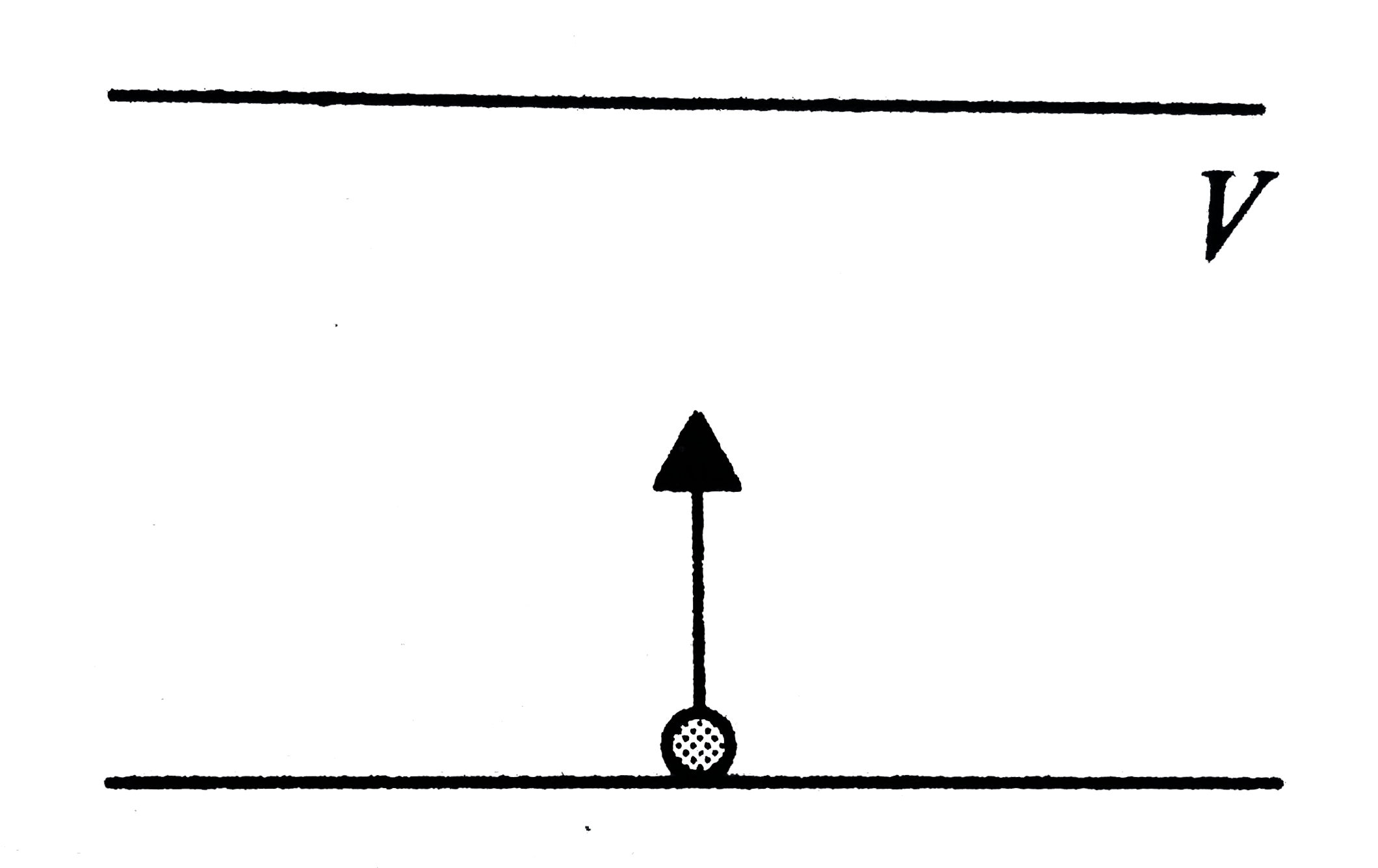An electric field of magnitude is produced between two parallel platees having a separation of 2.0 cm as shown in figure(29.E4) (a) What is the potential difference between the plates? (b) With what minimum speed should an electron be projected from the lower plate in the direction of the field so that it may reach the upper plate? ( c) Suupose the electron is projected from the lower plate with the speed calculated in part (b) . The direction of projection makes an angle of with the field. Find the mazimum height reached by the electron.

Topper's Solved these Questions
- ELECTRIC FIELD AND POTENTIALBOOK - HC VERMACHAPTER - ELECTRIC FIELD AND POTENTIALEXERCISE - Objective 2
8 Videos
- ELECTRIC CURRENT THROUGH GASESBOOK - HC VERMACHAPTER - ELECTRIC CURRENT THROUGH GASESEXERCISE - Exercises
23 Videos
- ELECTROMAGNETIC INDUCTIONBOOK - HC VERMACHAPTER - ELECTROMAGNETIC INDUCTIONEXERCISE - EXERCISE
9 Videos
Similar Questions
An electric field E is produced between two parallel plates having a separation d as shown.
(a) With what minimum speed should an electron be projected from the lower plate in the direction of field so that it may reach the upper plate ?
(b) Suppose the electron is projected from the lower plate with the speed calculated in part (a). The direction of projection makes an angle of 60∘with the field. Find the maximum height reached by the electron.
(c ) After how much time , the electron again strikes the lower plate ?
(d) Horizontal distance travelled by the electron in time calculated in part (c).
Charge on electron : e ,mass of electron : m, consider only electric force.
View SolutionA uniformly distributed space charge fills up the space between two large parallel plates separated by a distance d. The potential difference between the plates is equal to zero ? What will then be the field strength near the other plate ?
View Solution
Knowledge Check
An electric field of magnitude 400NC−1 can be produced by applying a potential difference of 20 V to a pair of parallel metal plates separated by
A2 cmB5 cmC20 cmD50 cmAn electron having charge e and mass m starts from the lower plate of two metallic plates separated by a distance d. If the potential difference between the plates is V, the time taken by the electron to reach the upper plate is given by
 .A√2md2eVB√md2eVC√md22eVD2md2eV
.A√2md2eVB√md2eVC√md22eVD2md2eVA parallel -plate capacitor is connected to a battery that maintains a constant potential difference V between the plates. If the plates are pulled away from each other, increasing their separation, does the magnitude of the charge on the plates (a) increase, (b) decrease, or (c ) remain the same ?
AIncreasesBDecreasesCRemain sameDBecome zero
An electron having charge e and mass m starts from the lower plate of two metallic plates separated by a distance d. If the potential difference between the plates is V, the time taken by the electron to reach the upper plate is given by
 .
.
View SolutionA uniform electric field E is created between two parallel
., charged plates as shown in figure . An electron
. enters the field symmetrically between the plates with a
. speed v_(0)'. The length of each plate is l. Find the angle of
. deviation of the path of the electron as it comes out
. of the field.

View SolutionAn electron enters between two horizontal plates separated by 2mm and having a potential difference of 1000V. The force on electron is
View Solutionv33.2
View SolutionA uniform electric field E is created between two parallel charged plates as shown in figure . An electron enters the field symmetrically between the plates with a speed v0. The length of each plate is l. Find the angle of deviation of the path of the electron as it comes out of the field.

View Solution
